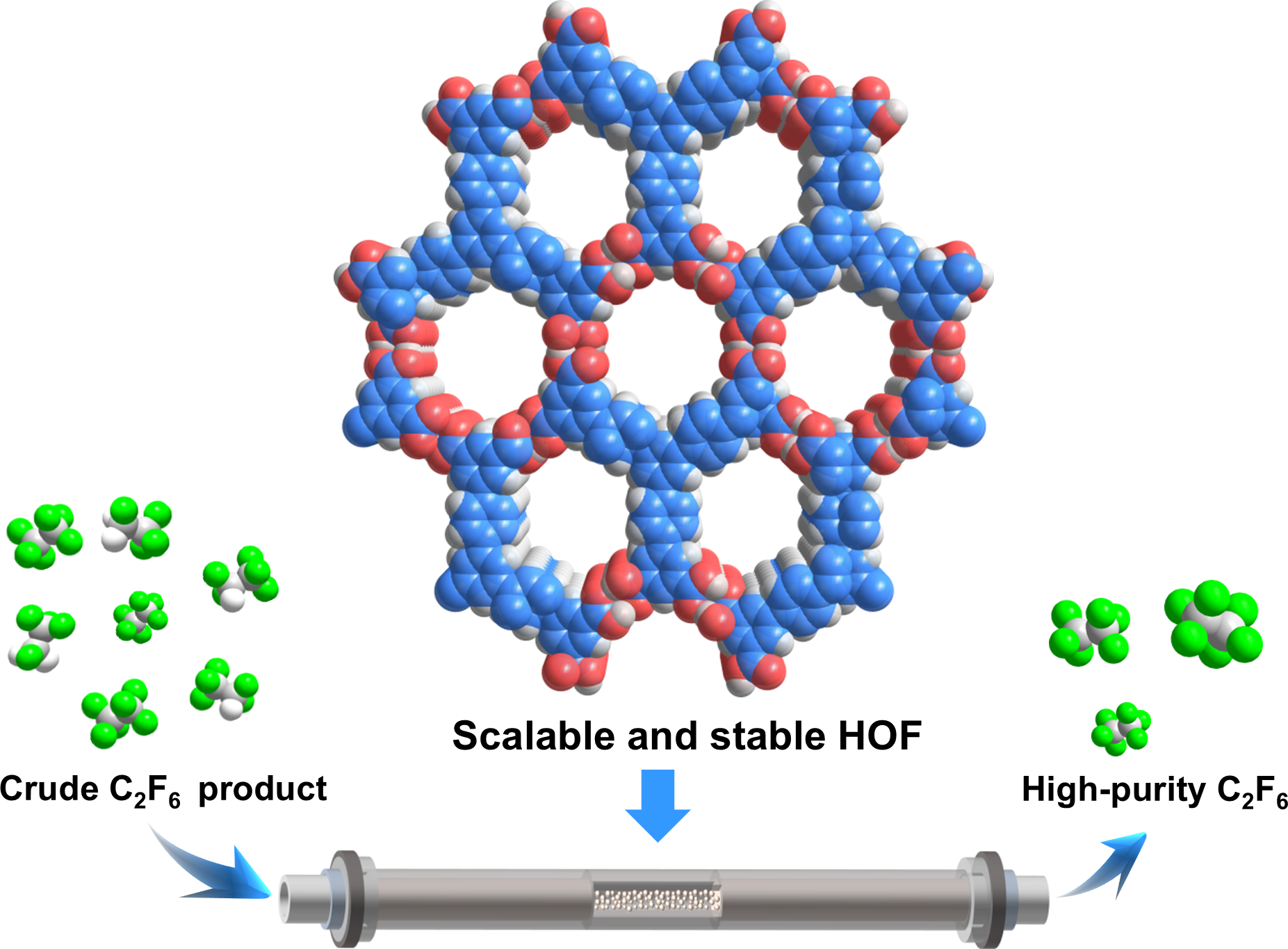Hexafluoroethane (C2F6), as a crucial fluorinated electronic specialty gas, is widely used in the semiconductor and microelectronics manufacturing industry. Developing stable, efficient and easily scalably-synthesized adsorbents for removal of hydrofluoroethanes to obtain high purity hexafluoroethane (C2F6) is of great importance to the electronics industry. Notably, the materials currently reported for C2F6 purification cannot be quickly obtained in large scale and have not excellent stability, which limits their application in pratical industry.
In a study published in Angewandte Chemie International Edition, Prof. Wu Mingyan from Fujian Institute of Research on the Structure of Matter, Chinese Academy of Sciences, rationally synthesized a stable microporous HOF (HOF-TDBB) with electrostatic potential matching pores for hydrofluoroethanes, firstly realizing one-step C2F6 purification from CF3CH2F/CF3CHF2/C2F6mixture.
The researchers found that the adsorbents with multiple electronegative/electropositive sites and appropriate pore sizes can realize high-efficiency C2F6 purification from CF3CH2F and CF3CHF2 mixtures. The abundance of aromatic rings and the high-density carboxylate oxygen atoms distributed on the pore surface of HOF-TDBB, which provide CF3CH2F and CF3CHF2 preferred environment. The adsorption experiment shows that HOF-TDBB can preferentially absorb CF3CH2F and CF3CHF2. At 298 K and 1 bar, the adsorption amounts and diffusivities for CF3CH2F and CF3CHF2 are 109.9 cm3 g-1, 95.0 cm3 g-1 and 1.04 × 10-15 m2 s-1, 0.71 × 10-15 m2 s-1 respectively, which are much higher than those for C2F6 (50.3 cm3 g-1 and 0.28 × 10-15 m2 s-1). Separation experiments show that 11.7 mol kg-1 of high-purity (>99.99%) C2F6 can be obtained from ternary CF3CH2F/CF3CHF2/C2F6 mixture after one breakthrough test.
They also found that HOF-TDBB can be synthesised on a large scale using a simple rotary evaporation method. Remarkably, the samples synthesized on a large scale exhibit high crystallinity and C2F6 purification efficiency similar to single crystal samples.
Furthermore, HOF-TDBB displays exceptional stability in air, common organic solvents and water. After treatments with some harsh conditions, the PXRD patterns and 77 K N2 uptakes of HOF-TDBB show on obvious change, which is rarely seen in the HOF materials.
This study provides an effective strategy for constructing the HOF material that can purify C2F6 from ternary CF3CH2F/CF3CHF2/C2F6 mixture.

A hydrogen-bonded organic framework possesses electrostatic potential matching pores for hydrofluoroethanes, realizing one-step C2F6 purification from ternary CF3CH2F/CF3CHF2/C2F6 mixture.(Image by Prof. WU's group)
Contact:
Prof. Wu Mingyan
Fujian Institute of Research on the Structure of Matter
Chinese Academy of Sciences
Email: wumy@fjirsm.ac.cn